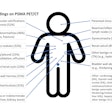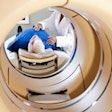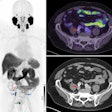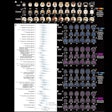Lantheus Medical Imaging is highlighting study data presented at this week's American College of Cardiology (ACC) meeting in Atlanta that indicate that its flurpiridaz F-18 PET myocardial perfusion imaging (MPI) agent has a higher specificity for detecting right coronary artery disease compared to rest-stress technetium-99m (Tc-99m) SPECT.
The phase II study also found that the North Billerica, MA, company's agent showed greater accuracy in evaluating the extent of stress-induced myocardial perfusion abnormalities, with coronary angiography as the gold standard.
Dr. Jamshid Maddahi, a professor of molecular and medical pharmacology and medicine at the University of California, Los Angeles (UCLA) David Geffen School of Medicine, is the principal investigator of the study, which was funded by Lantheus.
He called the results to date "encouraging" in the comparison to SPECT imaging with Tc-99m, adding that Lantheus' agent potentially could enhance diagnostic specificity and reduce the number of false-positive results associated with SPECT imaging, and subsequently reduce the number of unnecessary cardiac catheterizations.
Preliminary data
Nine patients from one center underwent same-day rest-stress Tc-99m SPECT MPI and separate-day rest-stress flurpiridaz F-18 PET MPI and coronary angiography. For each patient, 17 myocardial segments were visually scored for each rest and stress image by independent observers who were blinded to the other results.
Findings showed that the overall accuracy for correct identification of diseased coronary arteries was 93% (25/27) for PET and 78% (21/27) for SPECT.
Six patients were found to have coronary artery disease with both SPECT and PET. For the three patients without coronary artery disease, all three patients were found to be normal through PET imaging. Two were found to be normal through SPECT.
PET also detected all nine diseased coronary arteries, while SPECT detected eight of the nine diseased coronary arteries. In addition, PET imaging identified 16 of the 18 normal coronary arteries, while SPECT found 13 of the 18 normal coronary arteries.
Specificity for the right coronary artery was significantly higher through PET imaging (100%) compared to SPECT (43%).
Phase I results
In previous phase I studies, flurpiridaz F-18 performed well among all 25 normal patient volunteers, with no adverse effects related to the tracer, according to Maddahi. "In the phase II study, we evaluated the tracer in both normal patients and patients with coronary artery disease," he noted.
The advantage of having an F-18-labeled tracer, such as flurpiridaz F-18, is that it can be produced in a regional cyclotron and shipped to various institutions as a single dose, Maddahi said. He described that as "a major advantage" over a facility that would have to lease a generator onsite to produce rubidium-82 for cardiac imaging studies.
Other available agents, such as oxygen-15 water and N-13 ammonia, which also are produced at a cyclotron facility, have a half-life shorter than flurpiridaz F-18 and must be used within minutes after they are produced. Flurpiridaz F-18's half-life is approximately 109 minutes.
Investigators are expected to complete the phase II study within the next two months, Maddahi said. Phase III research could start as soon as the third quarter, he added.
By Wayne Forrest
AuntMinnie.com staff writer
March 18, 2010
Related Reading
Lantheus signs Spurr, February 17, 2010
Lantheus begins Ablavar marketing, January 20, 2010
Lantheus begins testing new PET agent, September 17, 2009
Lantheus signs Australian moly deal, June 15, 2009
PETNet signs supply deal with Lantheus, June 11, 2009
Copyright © 2010 AuntMinnie.com




















